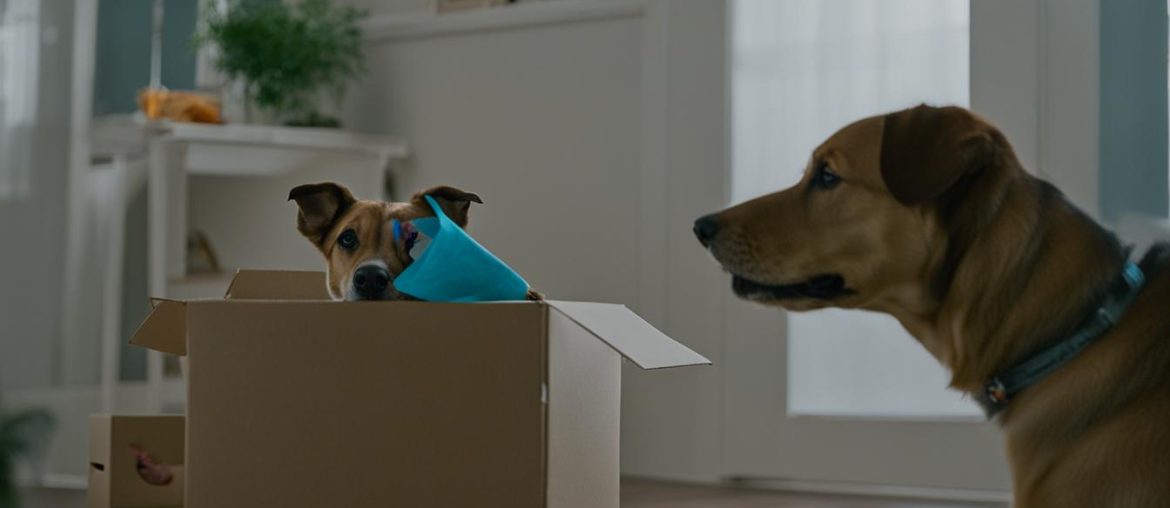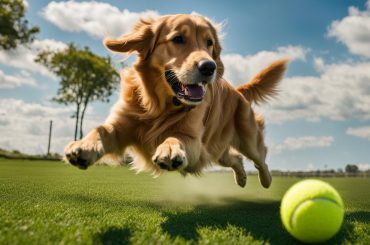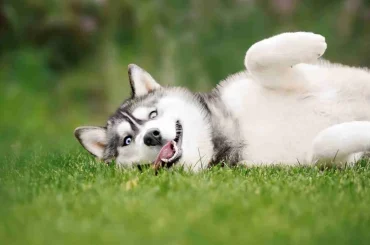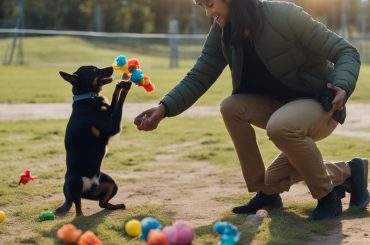Teaching your dog to bring you something can be both helpful and entertaining. Whether you want your furry friend to fetch the newspaper in the morning or play a game of fetch with a ball, teaching them to retrieve objects is a valuable skill that strengthens your bond and provides mental and physical stimulation. In this article, I will guide you through the process of teaching your dog to get something, step by step.
Key Takeaways:
- Start by teaching your dog to associate a specific command with a chosen item.
- Break down the training process into smaller steps and focus on one command at a time.
- Use various objects and treats to reward your dog throughout the training process.
- Consider the benefits of teaching your dog to fetch, including exercise and strengthening the bond between you and your pet.
- Be patient, consistent, and use positive reinforcement during the training sessions.
The Benefits of Teaching Your Dog to Fetch
Teaching your dog to fetch and retrieve has several benefits. Not only is it a fun and engaging activity for both you and your furry friend, but it also serves as a great form of exercise. Regular fetch sessions can help keep your dog physically active and promote a healthy lifestyle.
Fetch training also strengthens the bond between you and your dog. It creates a sense of trust and teamwork as your dog learns to follow your command and bring objects back to you. This interaction fosters a deeper connection and can contribute to a stronger relationship between you and your pet.
In addition to the fun and bonding aspects, teaching your dog to fetch can also have practical applications. Your dog can assist you in fetching items around the house, such as the remote control or the morning newspaper. This command can be particularly useful for individuals with limited mobility or those who may have difficulty reaching certain objects.

The Joy of Play and Exercise
Engaging in a game of fetch not only provides mental stimulation for your dog but also gives them an opportunity to release excess energy. Regular exercise is essential for a dog’s overall well-being and can help prevent behavioral problems that may arise from boredom or pent-up energy.
| Benefits of Teaching Your Dog to Fetch | Summary |
|---|---|
| Physical Exercise | Fetch provides a fun and effective way to keep your dog physically active. |
| Bonding | Teaching your dog to fetch strengthens the bond between you and your pet. |
| Practical Applications | Fetch training can be utilized to fetch items around the house, making it a practical command. |
| Mental Stimulation | Engaging in a game of fetch provides mental stimulation for your dog. |
Teaching your dog to fetch is not just about throwing a ball and having them bring it back. It’s about creating a strong relationship, providing exercise, and stimulating your dog’s mind. It’s a win-win situation for both of you!
By incorporating fetch into your dog’s exercise routine, you can ensure that they receive the physical activity they need to stay healthy and happy. Whether it’s playing in the backyard or taking a trip to the park, fetch can be a convenient and enjoyable way to keep your dog active.
Try to start with basic training and gradually build upon your dog’s skills. With consistency, positive reinforcement, and patience, you can successfully teach your dog to fetch and reap the many benefits that come with it.
The Basics of Teaching Your Dog to Fetch
Teaching your dog to fetch can be a rewarding and enjoyable experience for both of you. By breaking down the process into simple steps and using positive reinforcement, you can effectively train your pet to retrieve items on command. Here are some training tips for dogs to help you get started:
Training Tips for Dogs
- Start with one item: Begin by selecting a specific toy or object that your dog can easily grasp and carry.
- Introduce the item: Let your dog sniff and explore the item, getting them familiar with its scent and texture.
- Teach the “take it” command: Hold the item in your hand and offer it to your dog while saying “take it.” Once your dog takes the item in their mouth, reward them with a treat and praise.
- Practice the “give it” command: Hold out your hand and say “give it” as you gently tug on the item. When your dog releases the item into your hand, reward them again.
- Add the retrieve command: Place the item a short distance away from you and use the commands “take it” and “give it” to encourage your dog to fetch and return the item to you.
- Gradually increase the distance: As your dog becomes more comfortable with retrieving, gradually increase the distance between you and the item, rewarding them for successful retrieves.
Try to be patient and consistent throughout the training process. Reward your dog with treats and praise every time they successfully fetch and retrieve an item. With time and practice, your dog will become proficient in this fun and useful command.

Note: Always ensure that the items you use for fetch training are safe and appropriate for your dog’s size and breed. Avoid items that could be harmful if chewed or ingested.
Teaching Your Dog to Find Things
Teaching your dog to find things is a valuable skill that can be both practical and entertaining. Whether you want your dog to help locate misplaced items or simply enjoy the challenge of a hidden treasure hunt, this skill can be taught with patience and persistence.
Start by selecting an object that your dog can easily track using their sense of smell. This can be something with a familiar scent, such as a piece of clothing or a set of keys. Begin by introducing the object to your dog and allowing them to sniff and become familiar with it.
Once your dog is comfortable with the scent, you can begin hiding the object in various places. Start with easy hiding spots and gradually increase the difficulty level as your dog becomes more proficient. Encourage your dog to search using a command such as “find it” and reward them with treats and praise when they successfully locate the hidden object.
Training Tips for Teaching Your Dog to Find Things
- Start with an object that has a familiar scent for your dog.
- Introduce the object and allow your dog to become familiar with its scent.
- Begin hiding the object in various places, starting with easy spots and gradually increasing the difficulty level.
- Encourage your dog to search using a command like “find it” and reward them when they successfully locate the object.
- Practice regularly to reinforce and maintain this skill.
Try to be patient with your dog as they learn this skill. Some dogs may pick up on the concept quickly, while others may require more time and practice. The key is to make the training sessions fun and rewarding for your dog, using positive reinforcement to encourage their progress.
With time and consistency, your dog will become a proficient object finder, impressing your friends and family with their impressive skills. So go ahead and give it a try – teaching your dog to find things can be both mentally stimulating and a great bonding experience for you and your furry companion.

Scent Tracking for Dogs
Teaching your dog to find things involves scent tracking. Dogs have an exceptional sense of smell, and it can be harnessed to train them in finding specific objects. Scent tracking is a skill that can be learned by all dogs, regardless of breed or age. Some breeds, such as beagles and bloodhounds, have a natural talent for sniffing out scents, making them excellent candidates for scent tracking training.
When it comes to scent tracking, you have two options: allowing your dog to sniff the object before hiding it or showing them the object and then hiding it. Both methods can be effective, so choose the one that works best for you and your dog. I recommend that you use objects with familiar scents during training to help your dog associate the scent with the task at hand.
To get started with scent tracking, create a game where you hide an object with a strong scent, such as a treat or a piece of clothing, and encourage your dog to find it. Start with simple hiding spots and gradually increase the difficulty level as your dog becomes more proficient. Reward your dog with treats and praise when they successfully find the hidden object, reinforcing their positive behavior and encouraging them to continue scent tracking.
![]()
| Benefits of Scent Tracking for Dogs | Training Tips for Scent Tracking |
|---|---|
| Scent tracking provides mental stimulation for your dog, engaging their natural instincts and boosting their confidence. | Start scent tracking training in a quiet, distraction-free environment to help your dog focus on the task at hand. |
| It allows your dog to utilize their powerful sense of smell, which is highly satisfying and fulfilling for them. | Use high-value rewards, such as their favorite treats or toys, to motivate your dog during scent tracking training sessions. |
| Scent tracking promotes a strong bond between you and your dog as you work together to accomplish a common goal. | Gradually increase the complexity of the scent tracking game by introducing multiple hiding spots or different scents for your dog to track. |
With consistent training and practice, your dog can become skilled at scent tracking, adding a fun and stimulating activity to their routine. Not only will scent tracking provide mental enrichment for your dog, but it will also deepen your bond and create lasting memories as you explore the world of scent together.
Training Tips for Object Retrieval
When it comes to teaching your dog to retrieve objects, there are some key training tips to keep in mind. By following these tips, you can ensure a smooth and successful training process that will help your dog become a pro at retrieving items.
Start with Basic Commands:
Before diving into object retrieval, make sure your dog understands basic commands like “Sit” and “Stay.” These commands will provide a foundation for more complex tasks, such as fetching and bringing items back to you. Consistency is key during this initial stage of training.
Break Down the Process:
Object retrieval can be broken down into four main behaviors: going to get the item, picking it up, carrying it back, and dropping it at your feet or in your hand. Teach your dog each behavior separately, using treats and positive reinforcement to reward them for their efforts. Gradually, as your dog becomes proficient in each step, you can combine them into a seamless retrieve.
Use Treats and Rewards:
- During the training process, have plenty of treats handy to reward your dog for good behavior and successful retrievals. Use treats that your dog finds highly motivating and delicious, as this will make them more eager to participate in the training sessions.
- In addition to treats, make sure to offer plenty of verbal praise and affection to reinforce positive behavior. Your dog will be more motivated and excited to continue retrieving objects when they know they’re doing a great job.
To put it simply, patience and consistency are key when training your dog to retrieve objects. By breaking down the process, using treats and rewards, and building upon basic commands, you can help your dog develop this valuable skill. With continued practice and reinforcement, your dog will become a reliable retriever, making your life easier and more enjoyable.
Table: Common Mistakes to Avoid during Object Retrieval Training
| Mistake | Explanation | Solution |
|---|---|---|
| Skipping Basic Commands | Attempting object retrieval without a solid foundation in basic commands can lead to confusion and frustration for both you and your dog. | Ensure your dog understands basic commands like “Sit” and “Stay” before moving on to more complex tasks like retrieving objects. |
| Inconsistent Reinforcement | If you’re not consistent with rewards and reinforcement, your dog may become confused about what is expected of them during object retrieval. | Consistently reward your dog with treats, praise, and affection for successful retrievals. This will reinforce positive behavior and motivate them to continue fetching objects. |
| Skipping Steps | Rushing the training process and not properly teaching each step of object retrieval can lead to confusion and incomplete behaviors. | Break down the process into smaller steps and teach them one at a time. Gradually build upon each behavior until your dog can retrieve objects seamlessly. |
| Lack of Patience | Training takes time and patience. Lack of patience can lead to frustration, both for you and your dog, and hinder progress. | Stay patient and consistent throughout the training process. Celebrate small victories and understand that it may take time for your dog to fully grasp object retrieval. |
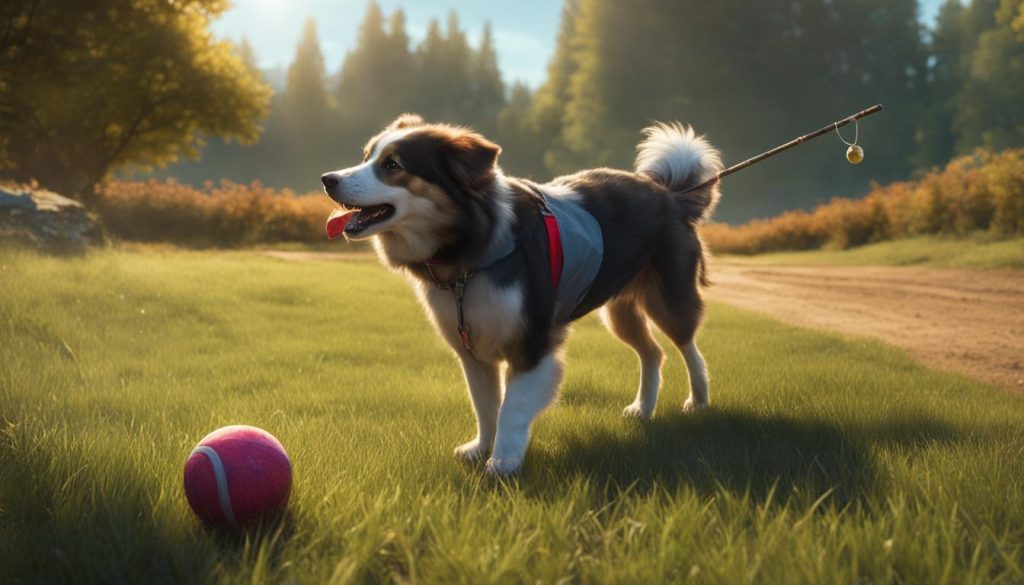
“Training your dog to retrieve objects requires patience, consistency, and positive reinforcement. Start with basic commands, break down the process, and use treats and rewards to motivate your dog. Avoid common mistakes like skipping steps and lacking patience. With time and practice, your dog will become a confident and reliable retriever.” – Professional Dog Trainer
Incorporating Fetch into Exercise Routine
Playing fetch with your dog is not only a great way to have fun, but it can also serve as an excellent exercise routine. By teaching your dog to fetch and bring objects back to you, you can provide them with a physical workout without having to chase them around. Whether it’s playing fetch in the backyard with a stick, ball, or their favorite toy, this activity will help keep your dog active and engaged.
Regular exercise is essential for maintaining your dog’s overall health and well-being. Incorporating fetch into their exercise routine provides a convenient way to ensure they get the physical activity they need. Plus, it’s a fantastic alternative to going for a walk, especially during inclement weather.
When engaging in a game of fetch, remember to start slow and gradually increase the intensity. Begin by tossing the object a short distance, and as your dog becomes more comfortable, you can gradually increase the distance. Be sure to provide plenty of praise and rewards when your dog successfully retrieves the item and brings it back to you.
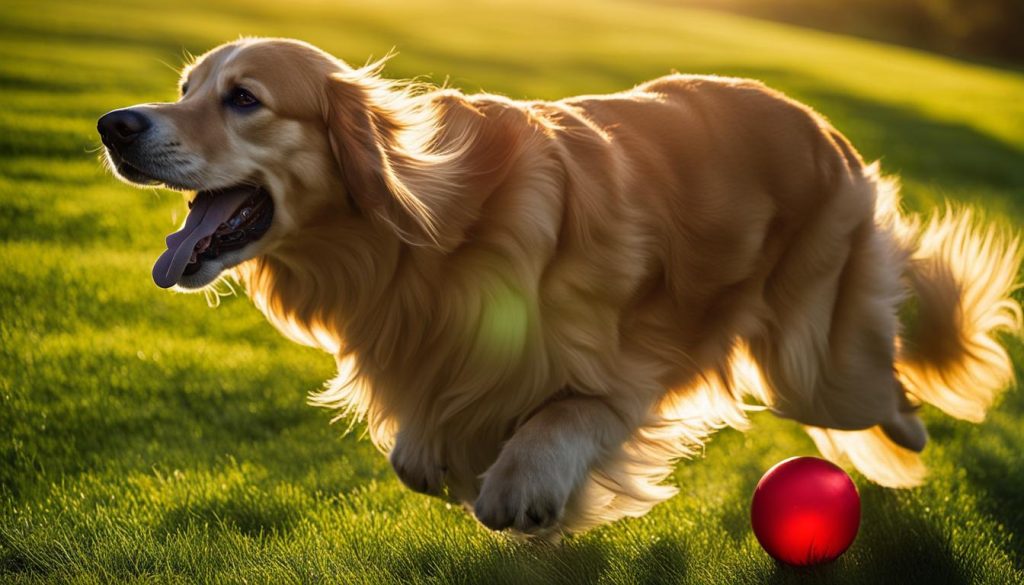
Benefits of Incorporating Fetch into Your Dog’s Routine
There are several benefits to incorporating fetch into your dog’s exercise routine:
- Promotes physical fitness and weight management
- Enhances muscle strength and coordination
- Provides mental stimulation and engagement
- Strengthens the bond between you and your dog
Try to tailor the exercise routine to your dog’s age, breed, and physical abilities. I recommend that you ensure that your dog is enjoying the activity and not overexerting themselves. Always monitor their behavior and make adjustments as necessary.
Engaging Your Dog in a Game of Fetch
Now that you have successfully taught your dog the basics of retrieving objects, it’s time to engage them in a game of fetch. Playing fetch with your dog is not only a great way to exercise them, but it also strengthens the bond between you and your furry companion. Follow these tips to ensure an enjoyable and rewarding game of fetch:
1. Start with short distances:
Begin by having your dog bring the toy back to you from a short distance. This allows them to understand the game and build confidence in their retrieving skills. Use treats or a clicker to reinforce positive behavior when they bring the toy back to you. Gradually increase the distance as your dog becomes more comfortable with the game.
2. Keep the excitement level high:
Make the game of fetch exciting for your dog by using an enthusiastic tone of voice and encouraging body language. Show them that fetching is a fun and rewarding activity. You can also incorporate verbal cues, such as “fetch” or “go get it,” to signal the start of the game. Try to reward your dog with treats and praise when they successfully retrieve the toy.
3. Mix it up:
Avoid monotony by introducing different toys or objects for your dog to fetch. This keeps the game interesting and prevents your dog from getting bored. You can use balls, rope toys, or even plush toys as options for fetching. Rotate between these toys to keep your dog engaged and excited about playing fetch.
To put it simply, consistency and practice are key when engaging your dog in a game of fetch. Keep training sessions short and fun, gradually increasing the difficulty level as your dog becomes more proficient. With time and patience, your dog will eagerly play fetch with you, providing both physical exercise and mental stimulation.

Essential Tools for Fetch Training
Teaching your dog to fetch requires the right tools and equipment to ensure success. Here are some essential items you’ll need:
- Various objects: Choose a selection of balls, rope toys, and sticks for your dog to retrieve. Different shapes and sizes can add variety to the training process.
- Treats: Reward your dog for their efforts and positive behavior during fetch training. Use small, tasty treats that your dog loves to motivate them.
- Clicker: A clicker is a useful tool to mark desired behavior during fetch training. It helps your dog understand that they’ve done something right and a reward is coming.
- Leash or assistant: A leash can help control your dog’s movements during training sessions, especially if they tend to wander off. Alternatively, enlist the help of a friend or family member to assist you.
Having these tools will make the fetch training process smoother and more effective. With the right objects, treats, and tools, you’ll be well-equipped to teach your dog to retrieve and enjoy a game of fetch.

Ongoing Fetch Training and Maintaining Fetch Skills
Once your dog has learned the basics of fetching and retrieving objects, I would advise that you continue their training and maintain their fetch skills. Ongoing practice and reinforcement of commands will help ensure that your dog remains engaged and obedient in this fun and practical activity. Here are some tips for continuing your dog’s fetch training:
Consistency is Key
Consistency is crucial when it comes to maintaining your dog’s fetch skills. Make sure to dedicate regular training sessions to reinforce the fetch command and practice retrieving objects. Consistently use the same commands and reward system to help your dog understand what is expected of them.
Vary the Objects
Keep your dog’s fetch training interesting by introducing new objects for them to retrieve. This helps prevent boredom and keeps them engaged in the game. Use a variety of toys, balls, and other items to help your dog generalize the fetch command and retrieve different objects on command.
Gradually Increase Difficulty
As your dog becomes more proficient in fetch training, gradually increase the difficulty level. This can include increasing the distance you throw the object, adding distractions, or incorporating more complex commands. By challenging your dog’s skills in a controlled manner, you can continue to stimulate their mind and enhance their fetch abilities.
| Benefits of Ongoing Fetch Training | Tips for Maintaining Fetch Skills |
|---|---|
|
|
By following these tips and maintaining ongoing fetch training, you can ensure that your dog continues to excel in fetching and retrieving objects. Try to keep the training sessions fun and positive, using rewards and praise to motivate your dog. With consistent practice and reinforcement, your dog will be a skilled fetcher, ready to impress and assist you in various situations.
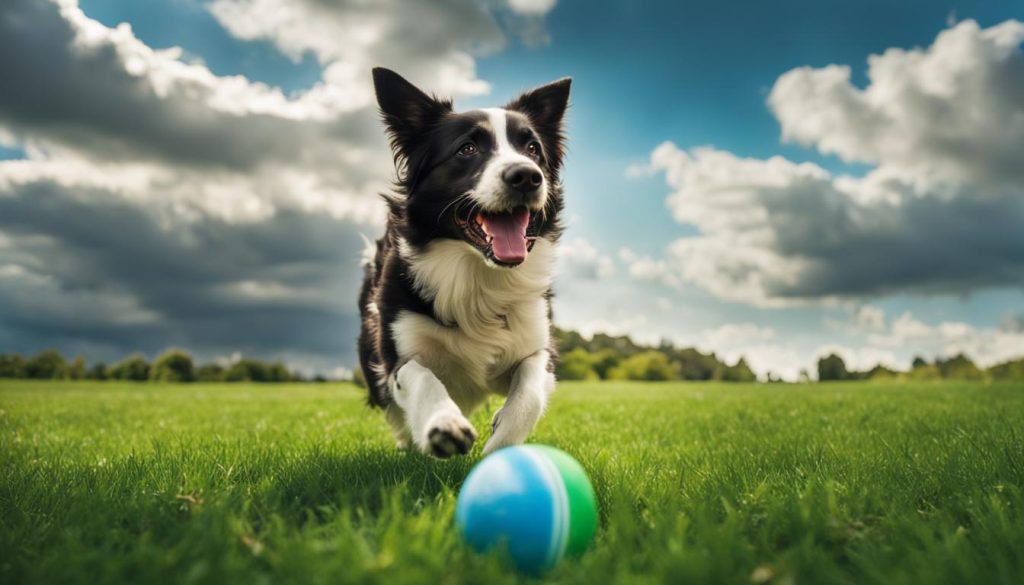
Troubleshooting Common Issues
While teaching your dog to fetch can be a rewarding experience, you may encounter some challenges along the way. I recommend that you address these common problems and find effective solutions to ensure successful fetch training. Here are some troubleshooting tips to help you overcome the most common issues:
1. Not Bringing the Toy Back
If your dog doesn’t bring the toy back to you after retrieving it, I would advise that you reinforce the fetch command. Start by practicing in a small, enclosed area where your dog has limited distractions. Use a long leash to gently guide your dog back to you if necessary. Reward your dog with treats and praise when they bring the toy back, and gradually increase the distance as your dog becomes more comfortable with the task.
2. Refusing to Give Up the Toy
Some dogs may be reluctant to give up the toy after retrieving it. To address this issue, incorporate the “drop” or “release” command into your training sessions. Start by offering a high-value treat as a trade for the toy, encouraging your dog to drop it. Gradually phase out the treats and reward your dog with praise and playtime instead. Consistency and patience are key to reinforcing the drop command and encouraging your dog to release the toy willingly.
3. Lack of Interest or Engagement
If your dog shows a lack of interest or engagement in the game of fetch, I would advise that you make the training sessions more exciting and rewarding. Use high-value treats or toys to grab your dog’s attention and motivate them to participate. Vary the objects you use for fetch to keep the game interesting, and incorporate enthusiastic praise and playtime as rewards. Try to keep training sessions short and fun, gradually building up your dog’s enthusiasm for fetch.
By troubleshooting these common issues and implementing effective solutions, you can ensure a successful fetch training experience for you and your dog. Try to be patient, consistent, and positive throughout the training process, and celebrate each small victory along the way.
Final Thoughts
In conclusion, teaching your dog to fetch and retrieve objects is a valuable skill that can be both fun and practical. By following the steps outlined in this guide, you can successfully train your dog to bring you items and engage in a game of fetch. Try to be patient, consistent, and use positive reinforcement throughout the training process.
With time and practice, your dog will become a confident fetcher, impressing your friends and providing you with a helpful companion for everyday tasks. Regular practice will help maintain your dog’s fetch skills and ensure they remain engaged and obedient.
While you may encounter some challenges along the way, such as dogs not bringing the toy back or refusing to give it up, don’t get discouraged. Troubleshoot these issues by going back to the basics and reinforcing the commands for taking and giving. Break down each step and continue to practice regularly.
To put it simply, fetch training is an ongoing process that requires consistency and practice. Once your dog has learned the basics, continue to reinforce the commands and practice the game regularly. Use positive reinforcement, such as treats and praise, to reward your dog for their efforts.
FAQ
How do I teach my dog to fetch?
You can start by teaching the command for a specific item, such as a ball or toy. Use treats to reward your dog for picking it up and bringing it to you. Gradually build upon the fetch command until your dog understands the entire process.
What are the benefits of teaching my dog to fetch?
Teaching your dog to fetch exercises them, strengthens your bond, and can be useful around the house for fetching items like the remote control or newspaper.
How can I teach my dog to find things?
Start by selecting an object with a familiar scent and using treats to reward your dog for successfully finding it. You can let your dog sniff the object before hiding it or show them the object and then hide it.
What is scent tracking for dogs?
Scent tracking involves teaching your dog to follow a scent to locate a specific item. Certain dog breeds have a natural talent for this, but all dogs have a good sense of smell and can learn with practice.
How do I train my dog to retrieve objects?
Break down the process into four behaviors: going to get the item, picking it up, carrying it back, and dropping it at your feet. Use treats as rewards and teach your dog to take something and give it back first.
How can I incorporate fetch into my dog’s exercise routine?
Playing fetch is a great way to exercise your dog. Use a stick, ball, or their favorite toy and gradually increase the distance and excitement level to keep your dog engaged.
How do I engage my dog in a game of fetch?
Use a clicker and treats to reinforce positive behavior. Start by having your dog bring the toy back to you from a short distance and reward them with a treat. Increase the distance and excitement level over time.
What tools do I need for fetch training?
Essential tools include various objects for your dog to retrieve, treats for rewards, a clicker to mark desired behavior, and a leash or a friend to help control your dog during training sessions.
How do I continue training and maintain my dog’s fetch skills?
Regular practice and reinforcement with treats and praise are essential. Introduce new objects or increase the difficulty level as your dog becomes more proficient in fetching.
What are common issues in fetch training and how do I troubleshoot them?
Common issues include dogs not bringing the toy back or refusing to give it up. Go back to the basics, reinforce the commands for taking and giving, and continue practicing regularly with patience and consistency.


